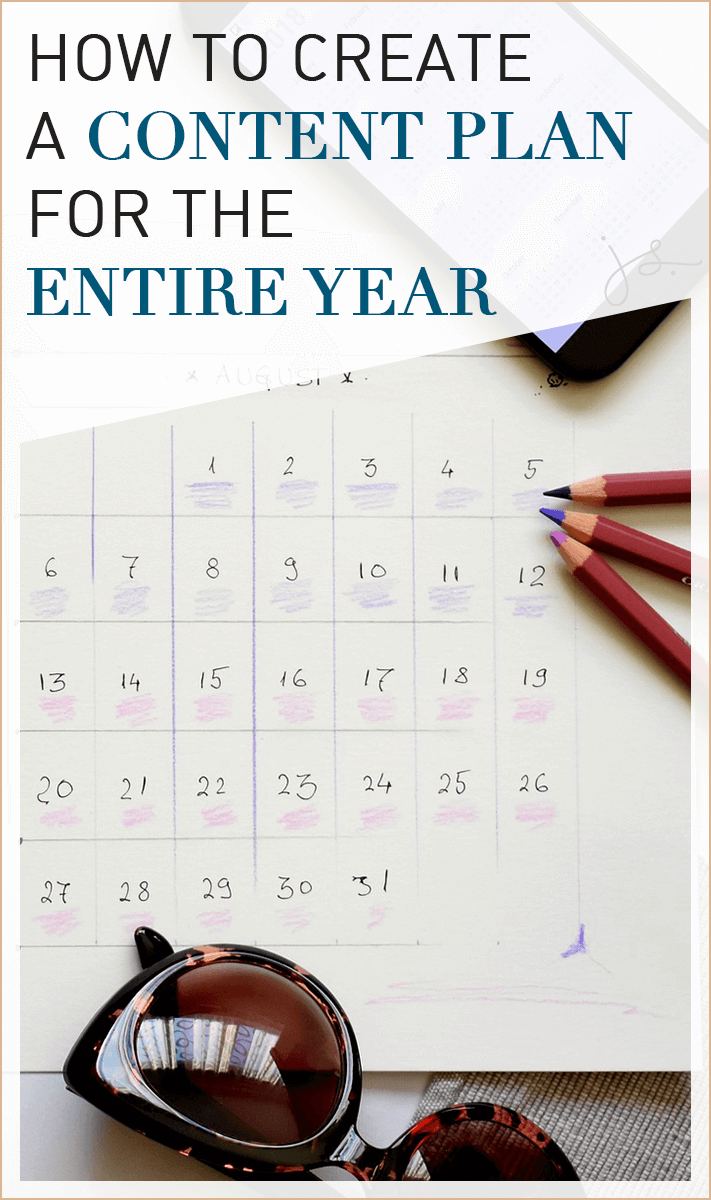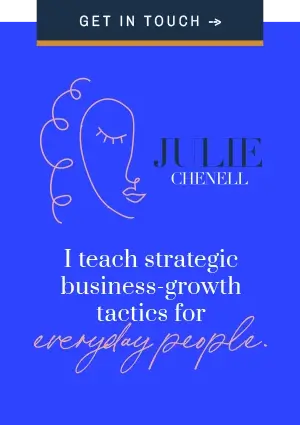Content creation is an important part of any business’s digital marketing strategy.
Developing an effective strategy for content creation is not only good for business, but it can also lead to less stress throughout the year as you regularly release content.
My first tip for productive content planning is to complete content in batches.
This weekly show, for example, was filmed in batches and slowly dripped out over time.
I’ll also discuss why my favorite medium is video and different ways I repurpose video into other mediums such as podcasts and blog posts.
Watch this week’s episode for the exact step-by-step plan I use to strategize and build content in advance to release throughout the year.
Get ready to systematize everything from planning and keyword research to repurposing and distribution.
Video Transcript:
Hey, Julie here today I want to teach you how to create a content plan, even a year’s worth of content in advance.
Some of you may not know this, but the video you’re watching right now was done in batch. I create my content in batches and it makes delivering content so much easier
because you can do a lot of things in one shot and then drip it out over the year. So how do you make a content plan for the entire year?
This is the steps that I do. Okay, so the first step is you’re going to brainstorm 12 topics or you can even call them themes.
So for my business, which is very much about entrepreneurship, I think of things like video marketing, affiliate marketing, blogging, social media, graphics, things like that.
Big overarching topic and theme. So pick 12, you want 12. That way you have one theme of the month.
Then what you’re going to do is you’re going to come up with four subtopics underneath each theme.
So for example, if the topic is video marketing, maybe I would do video equipment, maybe I would do video scripting, editing different types of video.
I would come up with four topics. You can actually do more than this if you plan to release content more than once a week. So for a lot of people, once a week is plenty.
So you could do four subtopics and that would be for a once a week plan.
But if you have a three times a week plan, if you’re really aggressive, underneath these four, you would want to do subs of subs.
So you could do, let’s say the big theme is video marketing with your subtopic, let’s say it’s video equipment. You would maybe do a blog post or a video on Adobe Premier or iMovie or Final Cut Pro. You know, you’d break it down even more.
So this is how you can come up with a content plan for the entire year, whether you’re doing once a week or three times a week.
All right. Step three is to do some keyword research.
So your topics probably have. You probably already know what the keywords are, but if you don’t, you can use Google keyword planner or you can use something like Ahrefs.
I’m going to put that down here so you can see it. E, F, S or the keyword planner from Google, and you want to find keywords that have low competition related to all these topics.
Now you have a really, really good foundational backbone of what you’re going to talk about.
So this is the planning stage right here. So that’s step one.
Now phase two is really about the platform. Okay, so the platform that you’re going to use and what kind of content are you going to use?
So everybody needs to pick a native platform. It doesn’t mean you can’t be on all the platforms, but pick your primary.
So for example, mine is Facebook, but you could do Instagram, especially if you’re a food blogger or you could do something like Pinterest or Youtube.
Alright, so pick your original platform and pick your medium. Are you going to do video, podcast, or are you going to do a blog?
Now my recommendation is that you choose video as your primary and that’s because it’s easier to shoot for a video first and then repurpose everything than it is to do podcast first and try to like turn it into a video or turn to a blog.
It’s easier to go from here to here, but you pick.
So pick your medium whether it’s going to be video, podcast or writing and then pick your native platform.
I’m going to just use me as an example. So I have Facebook and video. So now that I have my whole topic and plan, now I’m going to choose to batch film my videos.
Some of them are like this talking head with the whiteboard. Some are just graphics, some or screen shares. Some are just me talking and I’m going to film as many of them as I can.
You don’t have to do this. If you have all your video equipment at home, you can do like a bunch and then a bunch and then a bunch.
You’re going to choose. So, I would choose video and I’m going to shoot my video knowing that it’s going to go on Facebook, so more horizontal. If you were going to do Instagram, you’d want it more vertical. Youtube is definitely more produced content.
So that’s how you kind of choose what sort of medium you’re going to use and your platform. So I’m going to shoot my videos.
Once they’re done, now it’s time to repurpose. And repurposing is amazing. It’s like killing ten birds with one stone.
So out of one video, I can turn it into a blog post which will help with my SEO.
Then I can make a Pinterest image and I can pin it. So now it’s helping with my Pinterest traffic.
Then I can create a couple quotables. It’s what I call them- quotables. And I can make graphics and I can put them on Instagram.
Then I can do a raw live Instagram teaser, like on Instagram stories. And if I have 10,000 followers, I can ask them to swipe up and go to the blog post. I can also put the video on Youtube and I can link to the blog post.
And this is the most amazing part about video is I can extract the audio and I can turn it into a podcast.
So as you can see with one piece of content, I’ve just now taken care of almost all the types of traffic.
Additionally, you can edit this video and you can make teaser videos, you can make Facebook ads with them.
And the best part about this type of content is that it grows over time so it doesn’t just disappear into the netherworld.
So this is how you make an entire year’s worth of content in one big batch by brainstorming all your topics and doing your keyword research, picking your platform and your medium.
And my recommendation is video, even if it’s, you know, raw and simple, and then repurposing it using blog posts, SEO, Pinterest, quotables, Youtube, and even turning it into a podcast.
And that’s how you can take a really overwhelming content plan and scale it down so that you have one goal each week and each month.
I know the best conversations happen after the camera stops rolling. So if you’re watching this video and you have a question about your content plan, put it in the comments below, let me know what kind of content you do, what platforms you love, and I’ll be sure to get back to you.









0 Comments